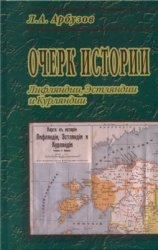- 2 402 202 книги
- Поиск
libcats.org






Encyclopedia of the American Constitution (6 Volume Set)
Leonard Williams Levy, Leonard W. Levy, Kenneth L. Karst, Adam WinklerThis new edition admirably continues the standard set in 1986 of providing high-quality, insightful, and thorough essays by leading constitutional scholars, law school professors, judges, historians, and political scientists on practical and theoretical topics dealing with every aspect of constitutional law in the U.S., from the Constitutional Convention in 1787 to the Clinton impeachment. The first edition won the 1987 Dartmouth Medal awarded by ALA's Reference and User Services Association and was designated as one of four core reference sources for a ''Bicentennial Bookshelf'' by the National Endowment for the Humanities. In 1992, a one-volume supplement was published, covering major constitutional developments and decisions since 1985 as well as topics omitted from the original set. When it came time to consider publishing a second supplementary volume, the editors wisely decided that it would be too unwieldy for users to have to consult the main volume plus two supplements to obtain thorough coverage of a topic. Instead, the editors opted to produce one new set, which would not only update many existing articles and cover new topics of importance but also include the original content of the first edition and its supplement. So, for example, John Paul Stevens is the subject of three consecutive essays: the original 1986 essay, an update in the1992 supplement, and a 2000 update. Although this arrangement is much simpler than requiring the reader to look in three separate volumes, one must continually stay alert to the fact that the older essays have not themselves been revised and must remember the temporal context when reading and evaluating them. On the other hand, reproducing the original essays and updating them with separate articles give a sense of how the interpretation of events, court decisions, and legal theories may change over time and expose the reader to different viewpoints on the same topic. Contributors to the first edition were encouraged to write commentaries that expressed their own views in addition to describing and analyzing their subjects. The second edition takes this a step further. For a few controversial subjects, such as electoral districting and same-sex marriage, it provides two essays by scholars with contrasting views, a feature that will be much appreciated by students writing compare-and-contrast-type essays.The second edition contains 316 new articles, mainly focusing on constitutional issues arising since 1992 (such as DNA testing and the Internet), recent developments in areas still the subject of litigation and legislation (abortion, affirmative action, search and seizure), new perspectives on doctrinal or historical subjects (taking of property, war powers), influential persons (primarily new Supreme Court justices and President Clinton), and recent Supreme Court decisions. Contributors include noted scholars such as A. E. Dick Howard, Wayne R. LaFace, Catharine MacKinnon, Robert M. O'Neil, and Mark Tushnet. Articles contain cross-referencing within the text, indicated by small capitals. Although this format saves space, it is difficult for a person scanning an entry to notice the cross-references. Also, the decision to embed cross-references within the text means that the reader is often referred to a very broad topic but may not be referred to a narrower but more relevant article. For example, homosexual marriage is discussed in Sexual preference and the constitution . The article contains a cross-reference to Sex discrimination within the text but not to the more relevant Same-sex marriage . See also references are found at the end of many articles, but articles cross-referenced within the text are not repeated. As with many reference works, the cross-referencing and see also referencing are not as comprehensive as one might hope. For example, there is no referencing between the articles Sex offender notification laws and Sexual predator laws, even though the topics are closely related.Most entries also contain short but useful bibliographies. The first volume offers an alphabetical list of all articles and updates with authors noted, as well as lists of contributors with their institutional affiliations and articles written. Appendixes containing historical documents, a chronology of the development of American constitutional law, a glossary, and a case index, name index, and subject index complete the set. Absent is an index for statutes. When a statute is the subject of an article, the statute-at-large citation is given for it; but when a statute is mentioned in the text of an article, the citation is not given. Including the citation information in an index modeled on the case index would have been useful. Apart from the minor flaws noted above, the second edition of Encyclopedia of the American Constitution is a masterful contribution to the reference literature. It fulfills its mission of bridging the disciplines of history, law, and politics using language that is accessible to a mixed audience ranging from high-school students and the general public to constitutional law scholars. It is recommended for public, secondary, academic, and law school libraries, as well as appropriate special libraries. RBB
Популярные книги за неделю:

Проектирование и строительство. Дом, квартира, сад
Автор: Петер Нойферт, Автор: Людвиг Нефф
Размер книги: 20.83 Mb

Система упражнений по развитию способностей человека (Практическое пособие)
Автор: Петров Аркадий НаумовичКатегория: Путь к себе
Размер книги: 818 Kb

Сотворение мира (3-х томник)
Автор: Петров Аркадий НаумовичКатегория: Путь к себе
Размер книги: 817 Kb

Радиолюбительские схемы на ИС типа 555
Автор: Трейстер Р.Категория: Электротехника и связь
Размер книги: 13.64 Mb
Только что пользователи скачали эти книги:

Очерк истории Лифляндии, Эстляндии и Курляндии
Автор: Л.А. АрбузовКатегория: ИСТОРИЯ
Размер книги: 21.74 Mb

Cultures of Fear: A Critical Reader (Anthropology, Culture and Society)
Автор: Uli Linke, Автор: Danielle Taana Smith (Editors)
Размер книги: 1.58 Mb





